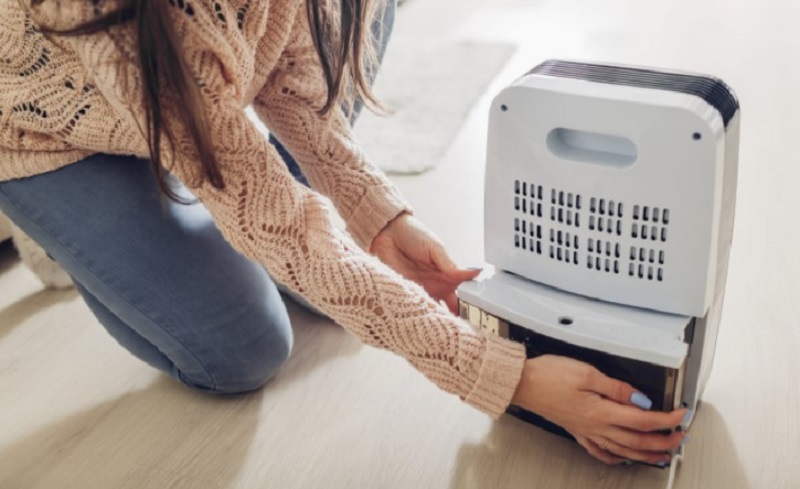The basement provides various advantages to households – like serving as the laundry area and storage place for unwanted appliances. It is also where most of the plumbing work is located. Unfortunately, this vital part of the home is often left unkempt by most people. This, in addition to moisture accumulation, can lead to several issues.
High humidity is, common in the basement because the place lacks proper ventilation. Natural dehumidification isn’t possible in such a location. Fortunately, homeowners can purchase a dehumidifier for basement use as a way of keeping humidity levels in check.

Where you place a dehumidifier in the basement determines its effectiveness. Overall, it should be close to an outlet and far from any stagnant water. Besides its location, other factors that may affect its operability include its capacity, the basement size, and average humidity levels.
Contents
Why you need a dehumidifier in your basement
Although high moisture content is not easy to detect, knowing the signs to look out for can help you determine whether you need a dehumidifier for your basement. Some of these include damp walls, musty smell, water spots on the floor, and visible mold on the ceiling, floor, and walls.
By eliminating excess moisture, a dehumidifier protects the structure of your building and makes the entire place healthy and comfortable for your household. Black mold that is commonly found in basements contains mycotoxins, which are known to cause skin inflammation, respiratory problems, and various other health problems
Unfortunately, moisture does not get away by itself. The more it stays, the more it causes harm to your health and property. With time, you will start noticing rust on metallic surfaces. The walls and floors of your home may get damaged too.
Identifying the best location for a humidifier in the basement can help you to deal with the moisture challenge completely. An excellent dehumidifier can help reduce the moisture content in your basement by approximately 50%. Most basements are small and enclosed, making it easier to manage the humidity in the space.
How to get the most from your basement dehumidifier
While using a basement dehumidifier, several tips can help you achieve optimal performance. These include:
Dehumidifier placement in the basement
The higher the moisture level in your basement, the harder it will be for the dehumidifier to work.
Dehumidifiers work best in enclosed spaces, so ensure that any outside openings to the basement are closed most of the time. Also, place it where there is adequate air circulation.
If you get one with a top-mounted air discharge, you can fix it against a wall to save space while achieving the best performance level.
Choose the right size
Not only do large basement dehumidifiers utilize more energy than small ones, but they also dry the air faster. Be sure to weigh the energy requirements of your preferred dehumidifier before purchasing it. That will help you to get a version that saves money on your energy bill.
Have a solid drainage system
As the dehumidifier dries the air, the condensed moisture needs to be drained. Although most dehumidifiers can hold a significant amount of water, not regularly draining them can cause malfunctioning. It is essential to have a sink or drain to empty the water.
Check the basement temperature
Dehumidifiers do not work in all temperature ranges. When purchasing one, ensure that you understand the temperature requirements.
In case the dehumidifier coils are covered in frost, switch the device off, and allow it to defrost. Go through the instruction manual to find out if your dehumidifier can run through winter.
Clean the dehumidifier
Some debris and dust may accumulate on the coils. Clean these as required for the best performance.
Will a dehumidifier in the basement help the whole house?
Whether a basement dehumidifier dries moisture in your entire house or not depends on various factors. These include the type of dehumidifier and the humidity levels in your home.
Portable dehumidifiers only operate in a specific room or area of the house. If you are using this type, it will not help with the rest of the house.
However, if you install a whole-house dehumidifier in your home, it will reduce humidity levels throughout your house. Most people prefer using this type because it has a longer operational span and can be repaired easily in case it breaks down.
Understanding the best location to place your dehumidifier can save you a lot of damage that comes with a damp basement. For optimum performance, select the right type based on the size and humidity level of the basement. Remember, one dehumidifier may not be able to serve other rooms that are close to the basement. You might need to have several of them.
Related Articles